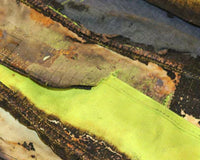When it comes to Arc Flash and Flame-Resistant (FR) clothing, safety professionals and workers alike are faced with a key decision: inherent FR fabrics vs. treated FR fabrics. Both are designed to protect against serious burn injuries, but they differ significantly in terms of performance, durability, comfort, and long-term value. Understanding these differences is essential for making the right choice for your workforce and ensuring both safety and compliance.
What Are Inherent Arc Flash & FR Fabrics?
Definition: Inherent FR fabrics are made from fibers that are naturally flame-resistant at a molecular level. The FR protection is part of the fiber’s DNA—it cannot be washed away, worn out, or degraded by laundering.
Examples include:
-
Meta-aramids (e.g., Nomex®)
-
Para-aramids (e.g., Kevlar®)
-
Modacrylics
Key Features:
-
Permanent protection – FR and Arc Flash resistance is built into the fiber structure and lasts forever.
-
Low-maintenance – Normal laundering practices, even with detergents, bleaches, or fabric softeners, do not affect protective performance.
-
Comfort – Typically lighter, softer, and more breathable than treated fabrics, making them easier to wear for long shifts.
-
Investment-level cost – Because of advanced fiber technology, inherent FR garments usually come with a higher price tag.
What are Treated Fabrics?
Definition: Treated FR fabrics start with base materials like cotton or cotton blends, which are then chemically treated - like fabrics that are dyed to give them Arc Flash and flame-resistant properties. The fibers themselves are not inherently resistant.
Examples include:
-
FR-treated cottons (e.g., Indura®)
-
FR-treated denim
- FR-Cotton/Polyester blends
- Chemically treated workwear fabrics
Key Features:
-
Chemically dependent – Protection is applied to the surface of the fabric or the yarn, rather than being part of the fiber.
-
Limited durability – Over time the protective treatment can degrade or wash out - just like colour will fade
-
Lower upfront cost – Often more affordable than inherent fabrics, making them attractive for short-term use or industries with tight budgets.
-
Less comfort-focused – Typically heavier, stiffer, and less breathable than inherent options.
Head to Head Comparison
| Feature | Inherent FR | Treated FR |
|---|---|---|
| Source of FR | Built into the fiber molecular structure | Chemical treatment applied to fabric or yarn |
| Longevity of Protection | Permanent; protection lasts for garment’s life | Can degrade/wash out over time |
| Care | Normal laundering, no special requirements | Strict laundering guidelines; no bleach or softeners |
| Comfort | Generally lighter, softer, more breathable | Often heavier, stiffer |
| Cost | Higher investment | Lower upfront cost |
Why SKANWEAR® Chooses Inherent Fabrics
At SKANWEAR®, safety is our number one priority. That’s why our STRATA Protection® range is manufactured exclusively from inherently flame-resistant and arc flash protective fabrics.
By using inherent FR technology, we guarantee:
-
Lifetime arc flash and flame resistance
-
Consistent protection regardless of laundering conditions
-
Comfortable, breathable garments that workers actually want to wear
When it comes to arc flash protective clothing cutting corners isn’t an option. Inherent FR fabrics deliver the most reliable, comfortable, and long-lasting protection—helping keep your workforce safe, compliant, and confident.



